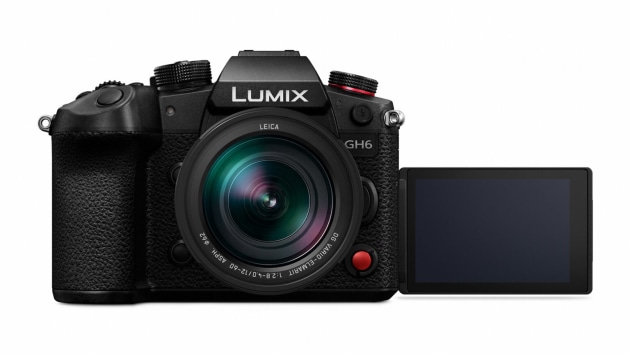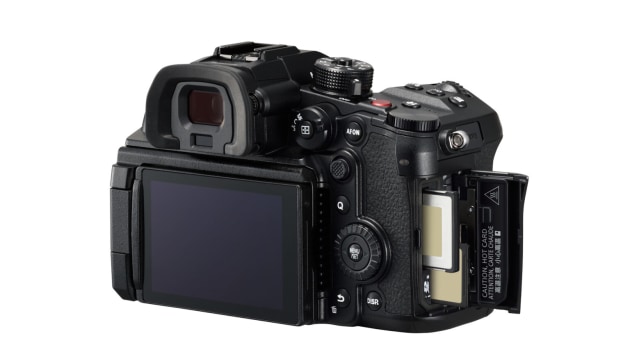Panasonic launches 25.2MP GH6 with up to 300FPS slow mo
Panasonic has announced the Lumix GH6, which features a new 25.2MP Micro Four Thirds (M43) sensor, 5-axis IBIS, 10-bit 4:2:2 recording, up to 5.7K 60fps, internal ProRes, and slow motion up to 300fps.

Over five years have passed since Panasonic released the LUMIX GH5 in 2017 and, despite iterative updates in the proceeding years (the GH5S in 2018 and more recently the GH5 II in 2021), it is the GH6 many photographers and videographers have been waiting for. There's a fair amount to unpack, so let's take a look.
Firstly, Panasonic has increased the effective pixel count of the GH6 by about 20%, which makes the GH6 the first M43 camera to offer a sensor larger than 20MP.
The newly developed 25.2MP sensor has no low-pass filter, with Panasonic claiming that despite it being higher resolution, the sensor should have increased dynamic range.
Powering the camera is a new Venus Engine processor that is nearly twice as powerful as its predecessor. Panasonic says it is equipped with 'advanced image processing technologies' that should render noise more naturally and reproduce colours accurately.

Panasonic says that the Venus Engine has evolved in three areas: Intelligent Detail Processing (which detects the edges and flat and detailed parts in a frame more accurately), 2D Noise Reduction (which suppresses chromatic noise and improves the texture of luminance noise), and High Precision 3D Noise and Colour Control (which optimises noise reduction and improves the image quality of video with dynamic motion). In addition, 3D Color Control enhances color reproduction by brightness level, saturation level, and hue level for faithful color expression.
The company says that together the improvements provide less noise, higher detail and realism and enhanced colour reproduction.
The camera also features a new and improved five-axis gyro sensor with a new algorithm that allows it to achieve 7.5 stops of on-sensor stabilisation. Utilising this system, 100-megapixel high resolution images can be captured in camera using a High Resolution mode both with a tripod or handheld. The system works by capturing eight consecutive images which are automatically shot while shifting the sensor using the Body I.S. The result is a 100-megapixel (11552 x 8672-pixel) image that can be saved in both RAW and JPEG.
The combination of the new sensor and processor means the GH6 has a wider ISO range of ISO 50 through 25,600 for photos and ISO 50 through 12,800 in video modes.
Video
As you might expect, the GH6's video features are impressive. At maximum resolution, the GH6 is capable of capturing C4K 60p 10-bit 4:2:2 with no time limits. In addition, high frame rate video recording has been enhanced to include 4K 120p 10-bit 4:2:0, and FHD 240p 10-bit 4:2:2 with audio recording, while VFR (Variable Frame Rate) is available up to 300fps in Full HD 10-bit for extreme slow motion.
The GH6 is also capable of capturing 4:2:2 10-bit C4K 60p both internally and externally over HDMI simultaneously, with the inclusion of HDMI 2.1 support for C4K 120p HDMI video output planned with a future firmware update. C4K 120p 12-bit RAW output to the Atomos Ninja V+ monitor recorder will also be available via another planned firmware update.
Panasonic hasn't forgotten about timelapse shooters either. 4K 60p Time Lapse video can be produced inside the camera, and with the Exposure Levelling function, the exposure is automatically adjusted to prevent large changes in brightness between adjacent frames, allowing daytime to nighttime ‘holy grail’ time lapses to be created in-camera. An internal time lapse calculator means timelapse shooters won't need to rely on external apps/intervalometers.
Autofocus
Panasonic continue to use a Depth-from-Defocus (DFD) autofocus system, with the company claiming it has been made more powerful and now offers 315-area and face/eye/head/body/animal recognition.
A new inclusion is AF Focus Limiter which allows for a near and far range that the camera’s autofocus will stay within. There's also MF Assist, which enables the focus point to be enlarged while video recording. The linear focus control enables repeatable focus pulls by adjusting the degrees required for the lens to move through the focus range from close to infinity focus.
Body
The camera body weighs 823g (including a battery and a memory card), with the body just marginally larger than earlier GH cameras mostly due to the active cooling system with built-in fan. The OLED viewfinder has 3680k dots, and a 3.0” LCD touchscreen display features the same tilting mechanism as the LUMIX S1H – it can be rotated freely and additionally opened to not get in the way of the connected HDMI connector. The camera body is still dust, splash, and freeze resistant, and the GH6 supports Bluetooth 5.0 and Wi-Fi 5GHz.

The GH6 is equipped with double card slots. The CFexpress card (Type B) supports internal recording of high bitrate video up to 1900Mbps including 5.7K 30p ProRes 422 HQ and C4K 60p ALL-I. The SD Memory Card UHS II V90 supports internal recording of video at 600Mbps or less, with modes including Relay Recording, Backup Recording and Allocation Recording, using both SD Memory Card and CFexpress Card.
The LUMIX GH6 retails for $3699, and will be available from April. You can find out more at panasonic.com.au.


